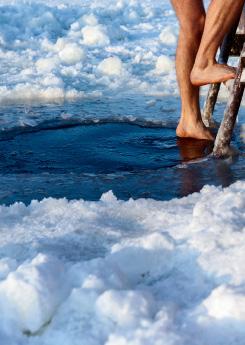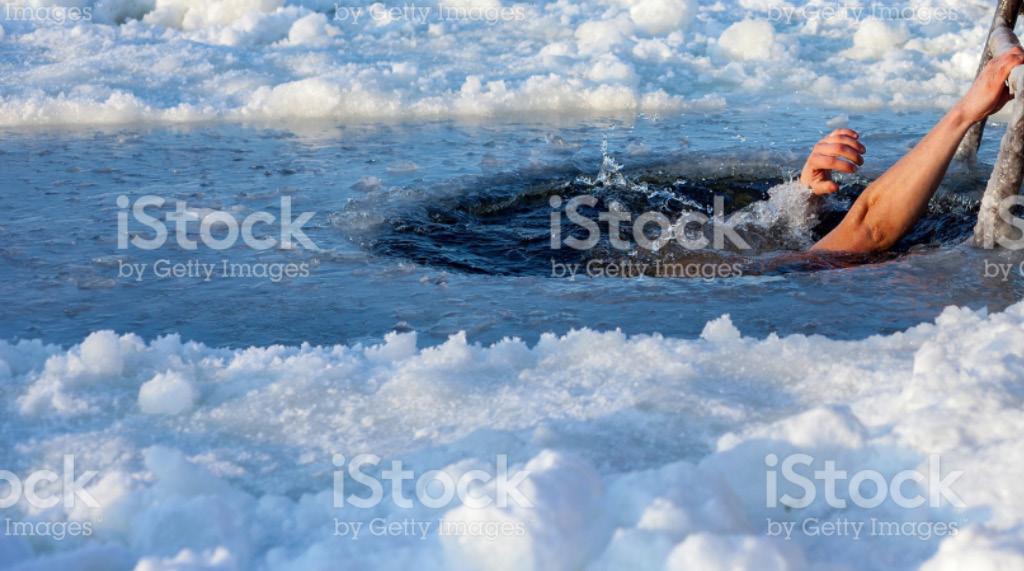
7 minute read
ICE MARATHON
from I Care Issue
by NAQI Belgium
— Interview by Wesley Muyldermans, sports journalist & writer—
GERTJAN VERDICKT IS AN AMATEUR ATHLETE FROM LONDERZEEL. HE IS CURRENTLY DOING A PHD IN APPLIED ECONOMICS, SPECIALISING IN FINANCIAL MARKETS, AT THE UNIVERSITY OF ANTWERP. HIS SPORT C.V. INCLUDES 15 YEARS OF BASKETBALL AND 2 YEARS OF BADMINTON. GERTJAN CAUGHT THE RUNNING BUG 6 YEARS AGO AND RAN BOTH THE BRUSSELS MARATHON AND THE ROME MARATHON TWICE BETWEEN 2011 AND 2014. THIS WAS THE PERFECT WAY TO PREPARE FOR HIS GREATEST CHALLENGE TO DATE: AN ENTIRE YEAR OF RUNNING FOR AND WITH MS PATIENTS, CULMINATING IN THE ICE MARATHON IN ANTARCTICA. IN THIS INTERVIEW, GERTJAN TELLS US HOW TO PREPARE FOR PHYSICAL EXERTION AT SUCH EXTREMELY LOW TEMPERATURES.
Gertjan, an Ice Marathon is not something that you do every month or even every year. Why are you doing this?
I'm running for charity and all donations will go to the operation budget of the Flemish Multiple Sclerosis League. I was confronted with MS, a disorder of the central nervous system, after it affected several people in my direct environment within a short period of time. I also have friends working in the MS centre in Melsbroek. At first, I knew practically nothing about the disease, but I started to learn more about it. I used to think that MS was a muscle disease, but it is not. A friend told me how she can no longer put on her trousers after a MS attack. As an enthusiastic runner, I thought to myself: "I can still run. I have to draw attention to this by running and participating in the Ice Marathon. I have already completed four marathons, two in Brussels and two in Rome. By running the Ice Marathon I want to go a step further to show people that I am going to do something as extreme as running in Antarctica. The difference is that for me this event will last just four hours or so and then it will be over. People living with MS have to cope with having a ticking time bomb inside them their entire lives. One day they may be fine, but the next day they could have an attack and their health could deteriorate sharply. I want to draw attention to this contrast.
How are you going to prepare for such strenuous physical exertion in extremely cold temperatures?
I am being coached by Energy Lab, which is operated by van Paul van den Bosch, who used to coach Sven Nys. They are drawing up nutrition and training schedules for me. Currently, my fat percentage is 17.7% , but this has to decrease, preferably to 10%. But this is a contentious point. On the one hand, we are not sure if a fat percentage of 10% is low enough to be really fit, and on the other hand whether it will be high enough to protect me against the cold. In a few months’ time I will start running in freezers, or cold rooms at a temperature of -15 to-20 degrees Celsius, just to get used to exercising at very low temperatures. We will not start this until next June as there is no point in starting any earlier. I'm just getting in some kilometres now to build up stamina. At the moment, I'm running for 50 minutes three times a week and will build this up to one and a half hours by the end of December. I will also try to train for at least two hours in the freezer or cold room, because the longer I can endure it in there, the better prepared I will be.
The Ice Marathon will also be mentally exhausting, won't it?
I always approach each marathon in the same way. There are days that I just don't feel like training. But I just plug in my headphones, push myself to start and set off, whether or not I feel like it. This approach also helps you to toughen up mentally. I used to play basketball, a sport that also requires you to be strong mentally, and I am now reaping the benefits. I see every training session as a new step in the right direction on the way to my ultimate goal.
It's going to be absolutely freezing in Antarctica. What are you going to wear?
I read on the organisation's website that you can run the Ice Marathon in normal shoes, and I have also seen this in short films that I have seen about the marathon. I have quite thick shoes, so they should be fine. I will have to wear three layers of thin clothing: underwear with a thermal inside and outside, a special thin sport jacket, etc. The most important thing will be to protect my face. NAQI has a special face cream made from Ectoin and that will certainly help. I will also wear a buff and special glasses. I can’t, for example, wear ski glasses because they would be too heavy. Training in freezers or cold rooms also gives you a lot of useful information about what kind of clothing I will need, and what I can tolerate, etc. The organisation says that it is best to prepare in the same way you would prepare for a normal marathon. But I prefer to leave nothing to chance.
You are training with the company of Paul van den Bosch, Sven Nys's former coach. When Nys was running races, he used to live like a monk. Are you planning to do the same?
I'm currently following a special diet. For a year, I will not drink alcohol and soft drinks, only still and sparkling water, except after a training session, when I can drink chocolate milk made with skimmed milk. I'm only allowed to eat wholemeal pasta, brown rice and brown bread. All white foods are off the menu. For example, I'm not allowed to eat pizza – one of my favourite meals – and that is not always easy. I'm also allowed low-fat meat, but no minced meat or salami. Cornflakes have been replaced by granola and oatmeal. It's a pretty healthy lifestyle.
Protecting your skin against the cold and the elements is something that can't be neglected. How are you going to go about this?
To be honest, this was not something that I had thought about until I spoke to the people from NAQI. During the Rome marathons, I did not do anything to protect my skin, but then again, it was beautiful weather there. I am very happy that NAQI is going to support me in various ways. I've been told that you have to build up your skin protection gradually, so I will start using NAQI Face Protector Sport a week before I start training in the cold room. I will continue to build this up until the race to ensure optimal face protection. I will also use NAQI Recovery Gel to speed up my recovery. I can really count on good coaching from NAQI, because their R&D is going to offer help when necessary to make sure that I start the Ice Marathon with optimal skin protection. My physical therapist will also receive support with products especially for therapeutic treatments. Friction is another problem that could occur. If I have to wear shorts for longer than an hour, I make sure that they are very close-fitting. As I said, I used to play basketball, where I wore very loose shorts, so I know what friction can do.
Your initiative is now receiving a lot of attention and this may inspire other people to do something similar. But they may have doubts. What would you say to convince them?
I think that it is better to try something than to spend the rest of your life wondering whether or not you could have done it. This is always my attitude at the start of a marathon. It is a short period of hardship, but you will be glad you did it for the rest of your life. The same goes for the Ice Marathon. I will have to grit my teeth for a short while, but I will receive so much in return. The first time I crossed the finish in Rome – five years ago now – I was overwhelmed by a roller-coaster of emotions. I can only recommend other people to do this!







